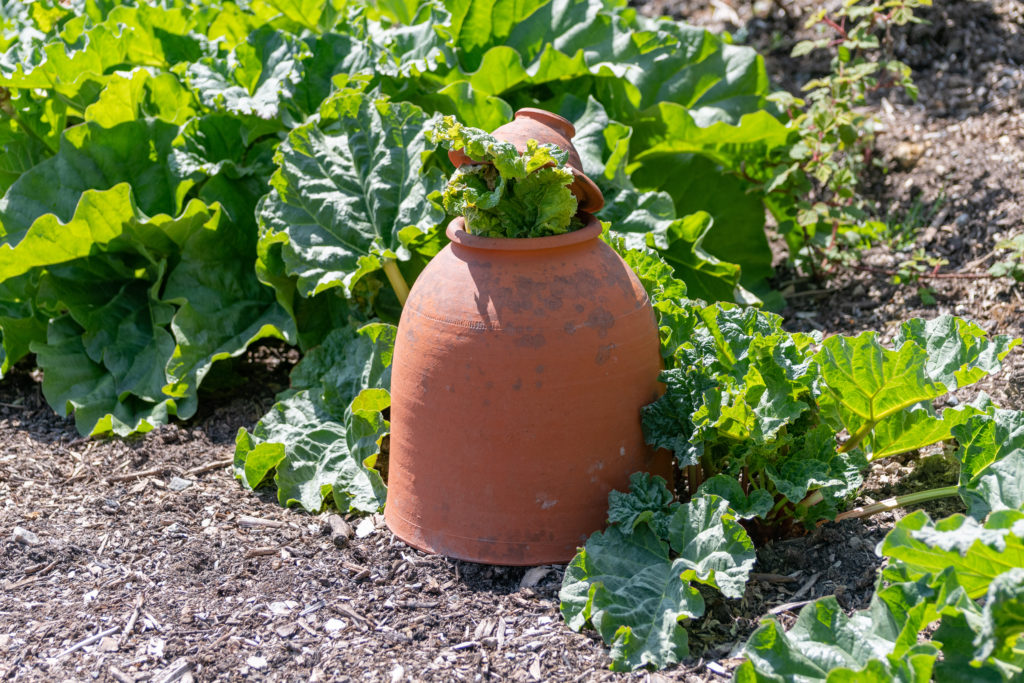Rhubarb, with its vibrant red stalks and distinct tart flavour, is a quintessentially British garden delight and gives me nostalgia just thinking about it! While many of us eagerly await the arrival of spring for the first harvest, did you know that you can enjoy tender, early rhubarb even before the growing season kicks into high gear? I have heard a lot about forcing rhubarb but have never tried it, so this year I’m giving it whirl!
Forcing rhubarb involves manipulating its growth to produce tender, succulent stems ahead of its natural schedule. Traditionally grown in the “Rhubarb Triangle” of West Yorkshire, this practice has been perfected over centuries, resulting in the coveted forced rhubarb we know and love today.
Choosing the Right Variety:
Not all rhubarb varieties are suitable for forcing. Look for varieties specifically cultivated for this purpose, such as ‘Timperley Early’ or ‘Stockbridge Arrow.’ These varieties respond better to the forcing process, yielding sweeter, more delicate stalks. I have no idea of my rhubarb variety, as it was gifted when I took on my allotment many moons ago so it’s a case of try it and see what happens!
Timing is Everything:
Forcing rhubarb typically begins in late December and extends through March. During this period, the rhubarb crowns are covered in the bed or pots to shield them from light and encourage early growth – the absence of light prompts the plant to draw on stored energy, resulting in accelerated stem development. I’m hoping my mid-January timing will work out well.

How to:
- Covering Crowns:
- Cover the rhubarb crowns with traditional forcing pots or bins to exclude light (I’m using half a blue barrel).
- Insulate the pots with straw or other insulating materials to regulate temperature.
- Harvesting:
- Check for readiness after 6-8 weeks. Once the stalks reach a height of 10-12 inches, they are ready to harvest.
- Harvest by pulling the stems gently from the base, avoiding damage to the crown.
Forced rhubarb apparently boasts a milder flavour and a more tender texture than its traditionally grown counterpart – I can’t wait to try some! Forcing rhubarb in the UK is not just a horticultural practice; it’s a culinary tradition that brings a burst of flavour to our tables during the colder months. I’m all for cosying up in the winter with a crumble!
Sarah.
Views: 142
